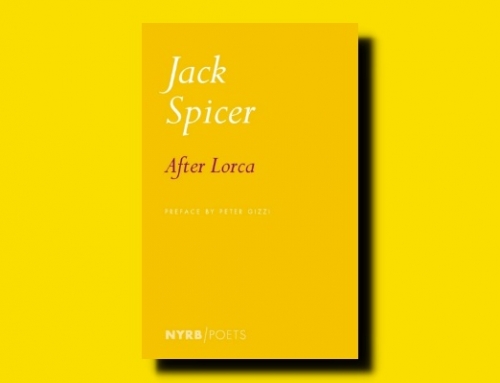
Philip Roth: Why Write? Collected Nonfiction 1960 – 2013
The Library of America
476 pp
 Those who followed this blog in its earliest days know that I was a big fan of Philip Roth. One of the first reviews — from July 4, 2008 — was of Roth’s The Ghost Writer, which is still one of my favorite books. Over the next few years I read and reviewed sixteen of Roth’s books. But the last one I reviewed — the last one I’ve read — was Operation Shylock, clear back in April 2011. When he retired from writing, I stopped reading his work for some reason. In the half decade that’s followed I’ve come to question my regard for Roth, who was for so long one of American literature’s Great Writers. Would I still feel this way if I encountered his work today? I wondered that as recently as August when I read Richard Sterne’s Other Men’s Daughters (my review of that book here).
Those who followed this blog in its earliest days know that I was a big fan of Philip Roth. One of the first reviews — from July 4, 2008 — was of Roth’s The Ghost Writer, which is still one of my favorite books. Over the next few years I read and reviewed sixteen of Roth’s books. But the last one I reviewed — the last one I’ve read — was Operation Shylock, clear back in April 2011. When he retired from writing, I stopped reading his work for some reason. In the half decade that’s followed I’ve come to question my regard for Roth, who was for so long one of American literature’s Great Writers. Would I still feel this way if I encountered his work today? I wondered that as recently as August when I read Richard Sterne’s Other Men’s Daughters (my review of that book here).
I need to test this, but I do think that if I sat down with the Zuckerman novels again, for example, that I would still admire a great many things about his work. Especially now, after going through The Library of America’s latest (and last) Roth volume, Why Write? Collected Nonfiction 1960 – 2013, I think Roth’s work and, importantly in the context of this post, his thoughts on literature are worth grappling with.
Roth has published 31 books, and 27 of those have been novels. Of the four non-fiction titles, The Library of America has already published two — The Facts and Patrimony — in an earlier volume. This is fitting since those two books are in line with Roth’s cagey non-fiction, where he’s playing with autobiography and fiction. In Why Write?, the contents are focused on the project of literature and includes pieces from his books Reading Myself and Others and Shop Talk, as well as fourteen previously uncollected essays (six of which had never been published before).
Reading Myself and Others was originally published in 1975. Roth had been publishing for fifteen years and had eight books under his belt, including the infamous Portnoy’s Complaint. In this collection of essays, Roth responds to critics and addresses some of the concerns brought up in his fiction, and some concerns against his fiction. He speaks generally about literature, in such essays as “Writing American Fiction” and “”In Response to Those Who Have Asked Me: How Did You Come to Write That Book, Anyway?” But of particular concern is criticism about his portrayal of Jews, which comes up again and again in such essays as “New Jewish Stereotypes,” “Writing About Jews,” “On Portnoy’s Comlaint,” and “Imagining Jews.” Not all of these were included in the original 1975 publication of Reading Myself and Others; “”New Jewish Stereotypes,” for example, was published in the updated 1985 edition, after Roth had written a few of his Zuckerman books.
These essays reminded me of how great of a writer Roth was, and that it’s too bad he didn’t write more essays in his fifty-year career. In “Writing American Fiction” Roth begins with a two-page opening paragraph about the murder of the Grimes sisters in Chicago in 1956, while Roth was living in Chicago. It’s a slick paragraph, moving from one thing to another, showing how complicated it all is with one contradictory phrase after another. The second paragraph is this:
And what is the moral of the story? Simply this: that the American writer in the middle of the twentieth-century has his hands full in trying to understand, describe, and then make credible much of American reality. It stupefies, it sickens, it infuriates, and finally it is even a kind of embarrassment to one’s own meager imagination.
Roth’s focus in the essay is on the gifted writers who, sadly, in his estimation, do not hit this stupefying reality head on.
Did Roth follow his own advice? Well, he certainly move about with a blunt instrument and pulled the covers off of many seemingly well-made beds. And when we get to the 1990s, when I think Roth was at his peak, he was still looking back to the middle of the twentieth century, grappling with the bizarre America as he knew it.
In 2001’s Shop Talk: A Writer and His Colleagues and Their Work, Roth’s last work of nonfiction, Roth published a series of interviews (most if not all previously published in various magazines and newspapers) with important 20th-century writers: Primo Levi, Aharon Appelfeld, Ivan Klíma, I.B. Singer (about Bruno Schulz), Milan Kundera, Edna O’Brien, and Mary McCarthy (about Roth’s own The Counterlife). There are also essays on Bernard Malamud and Saul Bellow. Going a bit off the line, there is also an essay about painter Philip Guston.
Roth, we see, was engaged with world literature, particularly literature from Eastern Europe, for much of his prolific career. I’ve heard it said cynically that this was Roth’s attempt to get the clout necessary to win the Nobel Prize. I don’t believe it (though perhaps it factored in). This is years of work and travel that demonstrates a deep concern with world literature and its project of exploring humanity. Indeed, this work to explore and bring attention to this world literature found its way directly into his fiction. Operation Shylock was inspired by Roth’s trip to Israel to meet Appelfeld.
Roth’s critics have their ammunition and I do think some of it is aimed true. However, despite his failings and blindspots, Roth is an author who took long and hard looks in the mirror and at his America and culture and he wasn’t afraid to lay it all out in his fiction. Here, we get him laying it all out in non-fiction. Here is how he ends his little introduction, which is perhaps the last “new” thing we’ll ever get from the man:
Here I am, out from behind the disguises and inventions and artifices of the novel. Here I am, stripped of the sleight of hand and denuded of all those masks that have conferred such imaginative freedom as I have been able to muster as a writer of fiction.








Why write?
I’ve always liked the oft-cited Joan Didion quote:
“I write entirely to find out what I’m thinking.”
Yeah, I think I get it.
Trevor, thanks for the excellent review.